Exercise for fibromyalgia pain and fatigue
Find out how you can use exercise to gain strength and energy and better manage your symptoms.
Updated on December 6, 2024

Physical activity can be tough when you have fibromyalgia. It may be difficult to exercise on the days you're feeling fatigued. And on the days when you're feeling well, you may be tempted to overdo it. But exercise is important, even if it's just a little. That’s because being inactive is likely to make your symptoms worse.
While many scientists agree that exercise may… Show More
Physical activity can be tough when you have fibromyalgia. It may be difficult to exercise on the days you're feeling fatigued. And on the days when you're feeling well, you may be tempted to overdo it. But exercise is important, even if it's just a little. That’s because being inactive is likely to make your symptoms worse.
While many scientists agree that exercise may help relieve fibromyalgia symptoms, they’re not yet certain about why it works. There’s likely no single reason, but many reasons working together. In fact, a 2023 review published in Therapeutic Advances in Musculoskeletal Disease found 29 different plausible reasons. Among them:
- Exercise improves sleep, relaxes muscles, and activates the body’s natural pain-relief system.
- When muscles are exercised, they get more oxygen, which can lower pain sensitivity.
- Some exercises may activate the immune system, the endocrine system, and the autonomic system, and may improve mental health.
There's no one-size-fits-all exercise guideline and strenuous activity may aggravate your fibromyalgia. But with a bit of trial and error—and guidance from your healthcare provider (HCP)—you can find activities that make sense for you.
Show Less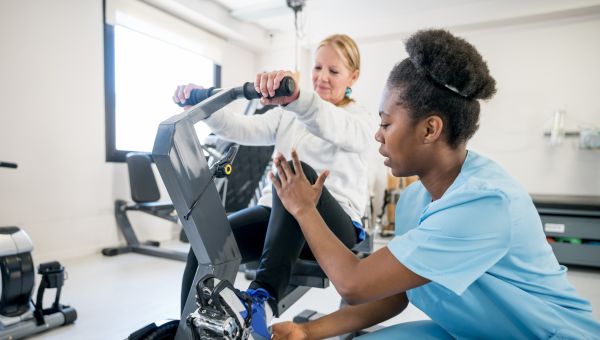
Work with a Physical Therapist
If you're new to exercise or just not sure what's safe for you, ask your HCP or rheumatologist for a referral to a licensed physical therapist—not a fitness trainer—who is experienced in helping people with fibromyalgia. Working closely with them may help prevent you from aggravating your symptoms.… Show More
If you're new to exercise or just not sure what's safe for you, ask your HCP or rheumatologist for a referral to a licensed physical therapist—not a fitness trainer—who is experienced in helping people with fibromyalgia. Working closely with them may help prevent you from aggravating your symptoms. That's especially true if you have other physical conditions or injuries to work around.
In addition to guiding you through exercises, a physical therapist can offer additional treatments that may help relieve symptoms, according to a 2022 review published in Frontiers in Physiology. These include electrotherapy, myofascial release, connective tissue massage, and Shiatsu, all of which may improve the quality of life for people with fibromyalgia.
Show Less
Exercise in the Pool
Research suggests that water exercises can help reduce pain and raise the quality of life for people with fibromyalgia. It also helps build up your strength and flexibility.
Working out in the water lets your body’s joints and muscles move more with less effort, which means less stress. Plus,… Show More
Research suggests that water exercises can help reduce pain and raise the quality of life for people with fibromyalgia. It also helps build up your strength and flexibility.
Working out in the water lets your body’s joints and muscles move more with less effort, which means less stress. Plus, because of the buoyancy of water, more difficult movements can be done in the pool than on dry land.
You don’t just have to swim laps. There are many fun workouts to choose from, including aqua aerobics, underwater walking or jogging, strength training, stretching, and water-based relaxation therapies like yoga and tai chi. Some spas and fitness centers even offer pool-based Zumba, hip hop, and country-western line dancing.
Show Less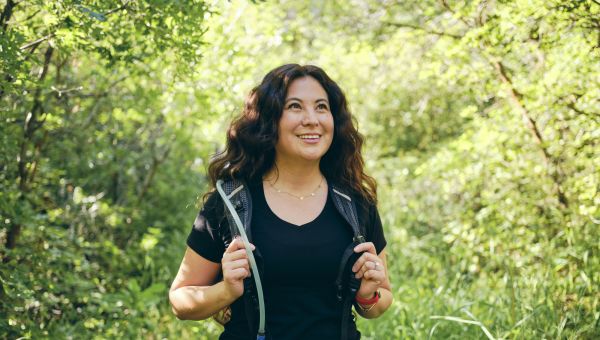
Try Low-Impact Activities
Cardio-based aerobic exercise can help to curb fibromyalgia symptoms, including pain, fatigue, anxiety, and depression. And the options are almost endless.
If you prefer group workouts, you can choose from a variety of low-impact aerobics classes, step classes, spin classes, yoga and tai chi… Show More
Cardio-based aerobic exercise can help to curb fibromyalgia symptoms, including pain, fatigue, anxiety, and depression. And the options are almost endless.
If you prefer group workouts, you can choose from a variety of low-impact aerobics classes, step classes, spin classes, yoga and tai chi classes, and more. Like solo workouts? Try treadmill walking, swimming, elliptical training, or even roller-skating, hiking, or biking.
Whatever exercise you try, again, check with your HCP first. It’s wise to stick with low-impact aerobics done at light to moderate intensity, as aggressive workouts may worsen your symptoms.
Show Less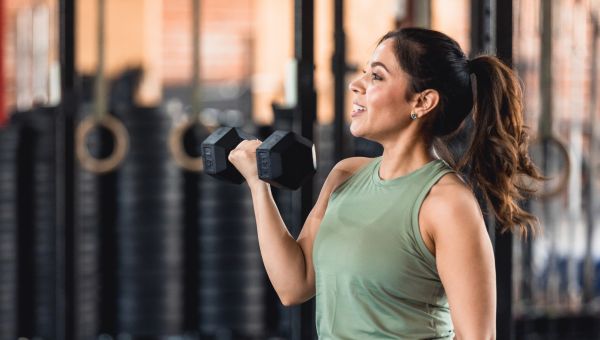
Build Your Strength
You don't have to be a body builder, but lifting light weights or doing other types of resistance-based strength training might improve your fibromyalgia symptoms. It shows promise in its ability to relieve pain, fatigue, and sleep issues in people with fibromyalgia, according to a 2022 systematic… Show More
You don't have to be a body builder, but lifting light weights or doing other types of resistance-based strength training might improve your fibromyalgia symptoms. It shows promise in its ability to relieve pain, fatigue, and sleep issues in people with fibromyalgia, according to a 2022 systematic review published in the Journal of Pain Research. It may also prevent weakening and loss of muscle mass (atrophy).
Show Less
Get into Walking
Lace up your walking shoes and hit the sidewalk. Research suggests that mild- to moderate-intensity walking may reduce fibromyalgia pain and fatigue just as well as other forms of aerobic exercise. According to a 2023 study published in Clinical Rheumatology, walking may also help lower your fear… Show More
Lace up your walking shoes and hit the sidewalk. Research suggests that mild- to moderate-intensity walking may reduce fibromyalgia pain and fatigue just as well as other forms of aerobic exercise. According to a 2023 study published in Clinical Rheumatology, walking may also help lower your fear or expectation of pain, also called “pain catastrophizing.” But ask your rheumatologist or physical therapist how fast, how far, and how often you should walk when starting out. And build up your walks gradually.
How much you should ultimately walk will depend on several factors, including your age, your fitness and activity levels, the severity of your fibromyalgia symptoms, and whether the activity worsens or improves your pain and fatigue. Keep in mind that it’s probably also best to do mini-walks here and there rather than take one long walk.
Show Less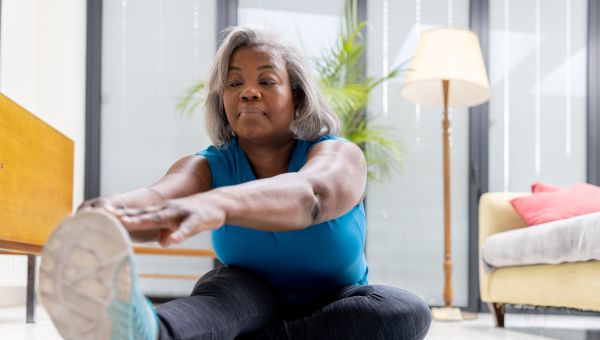
Stretch It Out
Compared with aerobics and strength training, there is less evidence for the benefits of stretching for people with fibromyalgia, according to a 2022 systematic review published in the Journal of Pain Research. But it’s still a valuable part of your workout routine, since stretching your arms, legs,… Show More
Compared with aerobics and strength training, there is less evidence for the benefits of stretching for people with fibromyalgia, according to a 2022 systematic review published in the Journal of Pain Research. But it’s still a valuable part of your workout routine, since stretching your arms, legs, and core muscles before doing another form of exercise can help limber you up, ease stiffness in your muscles, and get your body prepared for being active.
Show Less
Try Mind-Body Exercises
When your workout includes both mental and physical elements, it may help to improve overall fibromyalgia symptoms. Mind-body exercises usually include some kind of movement, breath exercises, and concentration or meditation.
Pilates, yoga, tai chi, and qigong are common options. Tai chi and… Show More
When your workout includes both mental and physical elements, it may help to improve overall fibromyalgia symptoms. Mind-body exercises usually include some kind of movement, breath exercises, and concentration or meditation.
Pilates, yoga, tai chi, and qigong are common options. Tai chi and qigong are traditional Chinese practices that combine gentle martial-arts-based movement, postural exercises, breathing exercises, and mindfulness meditation. According to a 2023 meta-analysis published in the International Journal of Rheumatic Diseases, traditional Chinese exercises like these may help lower pain, boost quality of life, improve sleep, and ease depression in people with fibromyalgia.
Show Less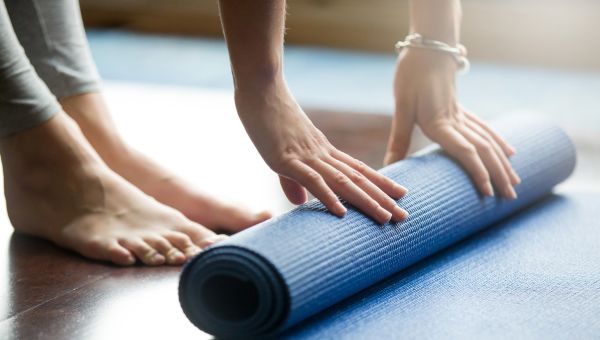
What To Avoid
It’s important to choose exercises that don’t strain or stress your body too much. Avoiding stress is also important to your mental health. So, try to manage emotional stress, too. Find time for relaxation each day or try meditation or breathing exercises. Do your best to get seven to nine hours of… Show More
It’s important to choose exercises that don’t strain or stress your body too much. Avoiding stress is also important to your mental health. So, try to manage emotional stress, too. Find time for relaxation each day or try meditation or breathing exercises. Do your best to get seven to nine hours of quality sleep each night.
Exercising regularly leads to more health benefits. Starting an exercise routine, giving it up, then starting it again can be harder on your body than maintaining a routine. On days when you’re not feeling well or feeling motivated, modify your routine, but don’t quit. Try doing less intense exercise or exercising for a shorter duration.
Likewise, on days you feel well or motivated, make sure not to overdo your activity. It may have repercussions and cause symptoms to flare later. Moderation is key. Remember too, that if exercise ever hurts or makes your symptoms worse, it’s important to take a break.
If you can't find exercise that works for you, check in with your HCP or a physical therapist as soon as possible. They can explore fibromyalgia treatments to get you back on a more active path.
Show Less
Neelapala YVR, Mercuri D, Macedo L, et al. Mechanisms hypothesized for pain-relieving effects of exercise in fibromyalgia: a scoping review. Ther Adv Musculoskelet Dis. 2023 Jul 16;15:1759720X231182894.
Rodríguez-Huguet M, Ayala-Martínez C, Góngora-Rodríguez P, et al. Aquatic Exercise in Physical Therapy Treatment for Fibromyalgia: Systematic Review. Healthcare (Basel). 2024 Mar 21;12(6):701.
Bilodeau, Kelly. “Fibromyalgia: Exercise helps — here’s how to start.” Harvard Health Publishing. October 13, 2020.
Zhang KD, Wang LY, Zhang ZH, et al. Effect of Exercise Interventions on Health-Related Quality of Life in Patients with Fibromyalgia Syndrome: A Systematic Review and Network Meta-Analysis. J Pain Res. 2022 Nov 22;15:3639-3656.
López-Gómez I, Velasco L, Gutiérrez L, et al. Symptoms in women with fibromyalgia after performing physical activity: the role of pain catastrophizing and disease impact. Clin Rheumatol. 2023 Jan;42(1):225-232.
Antunes MD, Marques AP. The role of physiotherapy in fibromyalgia: Current and future perspectives. Front Physiol. 2022 Aug 16;13:968292.
U.S. Department of Veterans Affairs - Whole Health Library. Tai Chi and Qi Gong. Page last updated May 1, 2024.
Du M, Hou X, Lu S, et al. Effectiveness of traditional Chinese exercise in patients with fibromyalgia syndrome: A systematic review and meta-analysis of randomized clinical trials. Int J Rheum Dis. 2023 Dec;26(12):2380-2389.
Mayo Clinic. Fibromyalgia. Page last reviewed October 26, 2021.
More On


video

article


video


video


video
